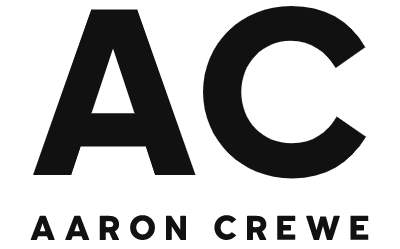Psychology, often misunderstood, is an essential part of doing business, particularly doing business online in the digital age.
Unlike offline or the conventional ways of conducting trade in a face-to-face capacity, digital has fewer available options when it comes to implementing psychological aspects as part of the sales process.
Studying recent client satisfaction surveys that we have conducted here at Novi, along with reflecting on internal communications that I have observed, the psychology aspect of what we do in terms of day-to-day activities is often overlooked and when it is considered, we barely touch the surface. As such, I am going to take the opportunity to elaborate on this a little further.
The Psychology of Employees – Why is employee feedback prevented?
A paper, shown in the Academy of Management Journal, explains how the Bystander Effect can be exhibited among employees inside a company. The article is linked here: https://journals.aom.org/doi/10.5465/amj.2017.0245
The abstract begins… “Employees often remain silent rather than speak up to managers with work-related ideas, concerns, and opinions. As a result, managers can remain in the dark about issues that are otherwise well known to or universally understood by frontline employees.
Whilst we have proactively worked on this inside Novi, especially during recent years, we have encouraged everyone in the company to speak up and make their thoughts known. This is something that we will also continue to be aware of and maintain as a key area of focus. Albeit it is not the only reason why people haven’t spoken up previously, other reasons potentially relate to worrying over how opinions or suggestions could be received (such as imposter syndrome); the bystander effect is still likely to be one of the most prominent reasons.
A solution to this is to encourage employees to assume the opposite, to assume no one has voiced their opinion; instead, focusing on being the first to share the idea and not only take ownership, but take responsibility and, in turn, reward this behaviour.
The same issue can be seen with clients too. We encourage our teams to avoid assuming that clients have an extensive knowledge of what we do, even when they say that they do. The reason for this is that the impact of underexplaining can be significantly worse than over-explaining.
The default position for many clients when asked whether they know something that they should know is to say ‘yes’. This can happen because they ‘should know’ and they are too embarrassed to say otherwise. Thus, there is little harm in explaining something in further detail, as people will often be quick to respond if it is something that they already know, and they will converse on the topic if it is of interest.
Why is this relevant to websites? Fundamentally, to understand what people visiting your website want, you need them to engage in communication. To do so, as the website, you need to make the first move. They won’t tell you what they want without you first asking.
Small Talk Leads to Big Talk
As shown on this TED link: https://ideas.ted.com/heres-why-you-shouldnt-shy-away-from-small-talk/, you shouldn’t shy away from small talk.
Relationships with clients matter and are integral to retention and business success. There are thousands of agencies across the UK. At Novi, as I have said many a time, ‘we punch above our weight’, meaning that the work that we do is superior to our peers when comparing like for like, but that alone is not always enough. It is not just about the work; it is also about the relationship you have with a client.
We have many ways to differentiate ourselves from our peers, but the one thing that other agencies cannot easily copy is our passion and determination to succeed. Our understanding of being a ‘people’ business is one aspect that enables us to stand out. We focus on people all the way along the journey, from the way we respect and aim to understand employees and colleagues alike, through to the way we interact with clients and aim to better understand their customers. The work we do is not a box-ticking exercise; it is much more than that. When we work with small businesses, we help people to put food on their tables for their families; for bigger businesses, we help to create employment and everything in between. By the time we have worked with 10 companies that employ 10 people, we have helped 100 people. If they all work with 10 companies with 10 people, we have helped 1,000 people and on it goes.
Why is small talk important?
Put simply, everyone has their reasons for doing something; it’s our aim to better understand their ‘why’.
By understanding our clients as people, we help to form bonds. It is these bonds that help to strengthen the relationship. By understanding their ‘why’, we can, therefore, help them achieve it. Knowing that they want to achieve 1000 leads is one thing, but knowing that they want to achieve 1000 leads because their business helps to reduce plastic waste and because they feel really passionate about the environment is another thing. Knowing this, we can help remind them of this when times are tough and results are not as they would like.
This is relevant because, in terms of a website, you need to make sure your products and/or services cater to the true needs of the individual and their particular set of circumstances. Small talk can be achieved through chatbots, email, or other methods of interaction.
Why post on LinkedIn?
People need to know you. Without knowing you, what they receive is simply a dispensable service. Understanding the clients’ ‘why’ is important, but enabling them to understand your ‘why’ is equally as important.
Posting on LinkedIn is a way to share your professional experiences. By doing so, you then become relatable, as others will empathise with your experiences, appreciate your knowledge, or share a mutual interest.
LinkedIn is also a great place to share your achievements.
Why is this important? Sharing your achievements reinforces trust between your customer and you. Ensure that the customer can find you on the channels that they are familiar with. Because LinkedIn is a closed network, it enables a degree of trust from the outset that you do not find in email.
What is it to be proud?
To be proud of something, you need to feel that you have done good work. Let me assure you, each and every day you will have done something that can be considered good work. If you have taken an exam, share it. If you have seen that the client has achieved success from the work you carried out, share it! If you’ve helped someone, share it. You need to showcase your success in order for others to be able to recognise it.
You can be proud of other aspects too. You can take pride in your appearance, pride in your workplace, pride in your environment, and pride in the cause that you work as part of.
Life is full of experiences; share them with others. People like to see positive stories!
How to create powerful experiences for others.
This diagram was recently shared with me by a client. It signifies research conducted by Gartner that epitomizes the pinnacle of powerful experiences.
Ask yourself, “What am I doing to make my clients better, safer, or more powerful?” The majority of people can provide information, many people can solve problems, a number of people can resolve needs/issues, very few can anticipate the needs of others before they do, and a small proportion can add true value to the individual. What can you do today to put yourself at the very top of this pyramid?
Here are three ways of dealing with a situation or a problem:
Which one is the best way to deal with a situation, in your opinion? I shall let you decide this.
– Do nothing and let it fester.
– Say something to someone else and expect or hope that they will resolve it.
– Do something yourself and be reactive.
As per the Gartner diagram, these different approaches to dealing with situations fall into the bottom three sections of the pyramid. In order to be proactive, you need to focus on the top two. This helps to prevent the need for a reactive approach. This isn’t to say that being reactive is a bad thing, or that it is entirely preventable, but there are many things that can be done to help prevent a situation from happening. That said, avoid falling into the trap of https://neurofied.com/the-dunning-kruger-effect. Avoid assuming that you are the smartest person in the room. Equally, avoid assuming that someone is capable of doing as much as you think they are. I’m not talking here about an inferiority complex (where individuals think they aren’t as good as someone else), but rather assuming that other people are as capable as you perceive them to be.
What is the true cost of being reactive versus being proactive?
I’m going to leave this question with you to ponder. Before I conclude this section, I’m going to share this link with you: https://www.onlinepsychologydegree.info/influential-psychological-experiments/. As shown, the learnings from 25 of the most famous psychology experiments (while not all are necessarily ethical or condoned) have each provided learnings that can be applied and influence the way that business is conducted in terms of a psychological approach.
Speaking of being proactive rather than reactive, there are many different ways in which behaviour can be influenced using cognitive biases.
Here are 49 different cognitive biases for you to consider:
Affect Dissonance Commitment Confirmation Bias Decision Fatigue Decoy Effect Dunning-Kruger Effect Time Discounting / Present Ego Depletion Elimination-By-Aspects Hot-Cold Empathy Gap Endowment Effect Fear of Missing Out (FOMO) Framing Effect Gambler’s Fallacy (Monte Carlo Fallacy) Habit Halo Herd Behavior Hindsight Bias (Knew-It-All-Along Effect) IKEA Effect Less-Is-Better Diversification Optimism Bias Overconfidence Effect Overjustification Effect Pain of Peak-End Bias Reciprocity Regret Aversion Representativeness Proof Sunk Cost Fallacy Zero Price Effect
The full list of definitions can be found here: http://humanhow.com/list-of-cognitive-biases-with-examples/.
In terms of how to implement these, Wix has produced a short guide in the form of a PDF in which they outline how you can benefit from 6 psychological principles to improve your website conversion rates. See the link below:
0784b1_5024bea5b
Having read the psychology experiments and considered the above, how could you implement the attached tips from WIX into your website and campaigns that you are working on?
I’m keen to hear your thoughts!

